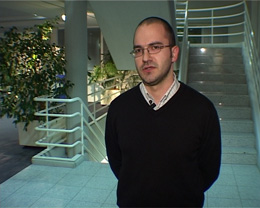COMMUNITIES
-
09.03.2007
IN THE PRESS
-
Cavaco visita comunidade portuguesa com educação na agenda (pdf)
in Rádio Latina 08.03.2007
-
Cavaco Silva no Luxemburgo (pdf)
in Contacto Semanário 07.03.2007
The Portuguese Community in the Grand Duchy of Luxembourg
The more recent estimates of the resident Portuguese Community in Luxembourg number some 80,000 people, 16% of the total population and 50% of the existing expatriates.
The number of Portuguese who have settled in Luxembourg has been increasing. It will have doubled in the last 20 years and, since 2003, approximately 3,000 have settled there per annum and, as such, it is the community with the larger flow of settlers.
Approximately 1,200 births are annually registered in the Community.
The Portuguese population is evenly distributed over the territory of Luxembourg, but is mostly concentrated in the Southern area, in the Esch-sur-Alzette canton (35.6%) and in the city of Luxembourg (23.28%). However the greater Portuguese population densities are found in the Northeast, in the communes of Larochette, Bettendorf, Schiren and Echternach where they represent, respectively, 77.04%, 76.03%, 68.70% and 66.04% of the respective total population.
The analysis of the Portuguese population over original residential regions shows it proceeds from all continental Portugal, but mainly from the districts of Coimbra, Braga, Vila Real, Viseu, Porto, Lisbon, Aveiro, Leiria, Guarda and Bragança.
The Portuguese active population (the second largest foreign group, after the French), is mainly composed of dependant workers and, ordered by size, in civil construction and public works, domestic services, hotels, restaurants, agriculture, sundry industries and services (banks and insurance companies).
There are currently more than 80 associations, federations and confederations with their own by-laws within the Portuguese Community, of which approximately 25% are in the city of Luxembourg and the remainder in the Esch-sur-Alzette and Differdange communes.
HIGHLIGHTS
THE PORTUGUESE IN LUXEMBOURG
Computer Engineer, aged 28
OTHER TESTIMONIALS
-
Rita Bento dos Reis
09.03.2007
-
Graça de Almeida
09.03.2007







 [
[